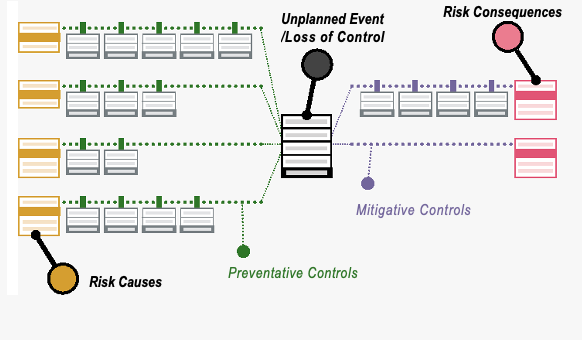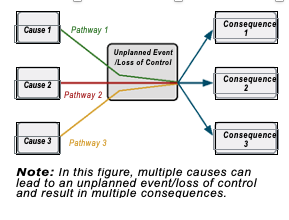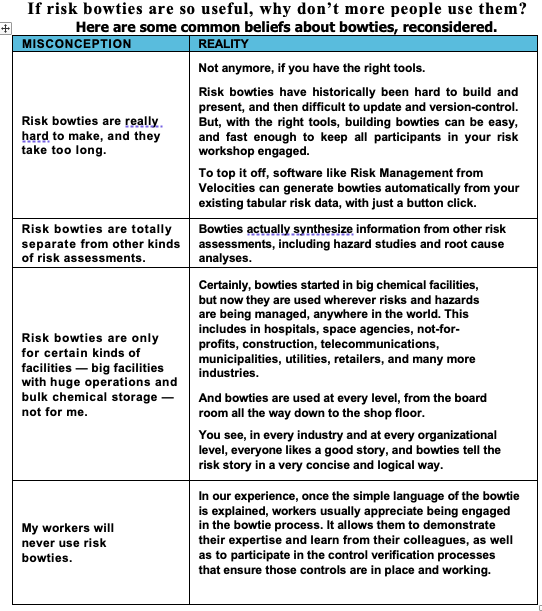 A Tool for Risk Management and Training
A Tool for Risk Management and Training
Many EHS professionals struggle to build a common understanding of significant risks and the controls that prevent and mitigate those risks — and easily share it by training their workforce. That’s because the tabular format used in most risk registers has been shown to limit the retention and therefore usefulness of that knowledge beyond the risk workshop.
By presenting that same data in visual form, risk bowties show distinct causal and impacting pathways at a glance, and how well your controls reduce that risk. This makes it easier to train your workers and helps them retain the knowledge they need. A risk bowtie looks like this:
Risk bowties improve knowledge retention and reduce re-training by:
- Engaging everyone from operators to safety managers in the risk “mapping” process.
- Highlighting roles and responsibilities and their interaction in incident
- Communicating simply and consistently with a common set of tools that can cover every foreseeable risk.
The advantage of raining your workers is that it’s easier to understand complex risk pathways at a glance. Risk events rarely result from just one pathway, and rarely have just one consequence, but spreadsheets and tabular data encourage us to simplify a risk scenario into a linear narrative that fits on one or two rows. That simplistic understanding of risk is not just inaccurate, but also dangerous.
Improving our ability to understand multiple-pathway risk scenarios enables better decision making, and better awareness of how our risk controls function to minimize risks within specific pathways. The example to the right shows how easy it is to map out different pathways using a risk bowtie.
Bio:
Dr. Bill Pomfret of Safety Projects International Inc who has a training platform, said, “It’s important to clarify that deskless workers aren’t after any old training. Summoning teams to a white-walled room to digest endless slides no longer cuts it. Mobile learning is quickly becoming the most accessible way to get training out to those in the field or working remotely. For training to be a successful retention and recruitment tool, it needs to be an experience learner will enjoy and be in sync with today’s digital habits.”

